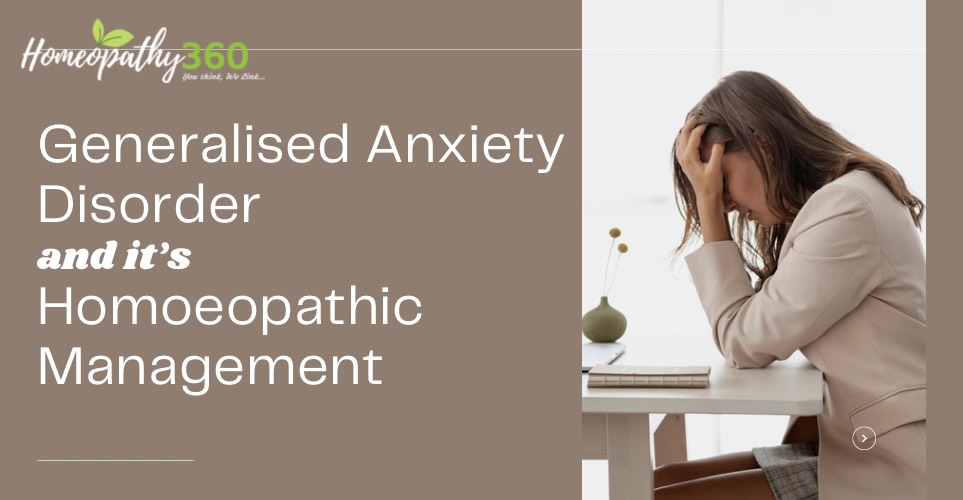
ABSTRACT:
Anxiety neurosis, also recognized as generalized anxiety disorder (GAD), represents a pervasive mental health condition marked by persistent and overwhelming apprehension. This article delves into the intricacies of anxiety neurosis, exploring its multifaceted nature, causes, and societal impact. It discusses the amalgamation of biological, psychological, and environmental factors contributing to its onset, while also addressing the prevailing stigma hindering access to support and treatment. Emphasizing the importance of education, empathy, and de-stigmatization, the article advocates for a more understanding and inclusive approach towards individuals navigating the challenges of anxiety neurosis. Ultimately, it underscores the significance of fostering a culture that prioritizes mental well-being and advocates for the support and empowerment of those affected by this complex condition.
INTRODUCTION:
Anxiety neurosis, a condition affecting millions worldwide, remains a subject of intrigue and concern in the realm of mental health. Its intricacies, often misunderstood, pose challenges for both those experiencing it and the broader society attempting to comprehend its impact.
Anxiety neurosis, also known as generalized anxiety disorder (GAD), transcends momentary worries. It is a persistent state of heightened unease and apprehension that can permeate various facets of an individual’s life. Unlike the typical stress responses to life’s challenges, anxiety neurosis can be all-consuming, affecting daily functioning and overall well-being.
At its core, anxiety neurosis manifests in a multitude of ways. It can present itself through incessant worry about seemingly trivial matters or catastrophizing future events, leading to a perpetual state of tension. Physical symptoms often accompany the mental turmoil—ranging from rapid heartbeats, shortness of breath, to muscle tension—creating a vicious cycle that reinforces the anxiety.[1][2][3]
Understanding the etiology of anxiety neurosis reveals a complex interplay of biological, psychological, and environmental factors. Genetics, brain chemistry, and life experiences contribute significantly to its onset and progression. Traumatic events, chronic stress, or a family history of anxiety disorders can heighten susceptibility.
The social stigma around mental health poses a significant barrier for those grappling with anxiety neurosis. Misconceptions prevail, often leading to dismissal or belittling of the condition. Consequently, seeking help becomes an arduous task for many, exacerbating the already challenging journey towards healing.[5][6]
However, strides have been made in the realm of mental health awareness and support. Recognition of anxiety neurosis as a legitimate medical condition has paved the way for de-stigmatization and increased access to mental health resources. Therapeutic interventions, including cognitive-behavioral therapy (CBT), mindfulness practices, and medication, have shown efficacy in managing symptoms and improving quality of life.
Creating a compassionate and understanding environment is crucial in supporting individuals with anxiety neurosis. Empathy, patience, and education play pivotal roles in dismantling misconceptions and fostering an inclusive community that prioritizes mental well-being.
Education remains a cornerstone in empowering both individuals and society at large. Initiatives aimed at disseminating accurate information about anxiety neurosis, its symptoms, and available treatments are imperative. Encouraging open dialogues and providing platforms for sharing personal experiences can contribute significantly to reducing the stigma surrounding mental health.
In conclusion, anxiety neurosis is a multifaceted condition that warrants attention, empathy, and informed action. By fostering a culture of understanding and support, we can create a world where individuals grappling with anxiety neurosis feel validated, heard, and empowered to seek the assistance they deserve. Through collective efforts, we can pave the way towards a more compassionate society, where mental health is regarded with the same importance as physical well-being.
SYMPTOMS:
Diagnostic criteria in the Diagnostic and Statistical Manual of Mental Disorders, fifth edition (DSM-5) include the following:
- Excessive anxiety and worry for at least six months
- Difficulty controlling the worrying.
- The anxiety is associated with three or more of the below symptoms for at least 6 months:
- Restlessness, feeling keyed up or on edge
- Being easily fatigued
- Difficulty in concentrating or mind going blank, irritability
- Muscle tension
- Sleep disturbance
- Irritability
- The anxiety results in significant distress or impairment in social and occupational areas
- The anxiety is not attributable to any physical cause
Diagnosing anxiety in patients can be challenging since physical symptoms tend to outweigh psychological ones. Most individuals with anxiety express vague physical discomforts such as breathlessness, heart palpitations, fatigue, headaches, dizziness, and restlessness. They may also mention psychological issues like excessive and nonspecific anxiety, emotional fluctuations, difficulty focusing, and sleep problems.[10]
Several factors often linked to generalized anxiety include:
- Being female
- Unmarried status
- Poor overall health
- Lower educational attainment
- Presence of stress-inducing factors
- Typically, generalized anxiety tends to manifest around the age of 30.
Various measurement scales have been created to gauge the severity and diagnose anxiety. The GAD-7, specifically, has been verified as both a diagnostic aid and a tool for assessing the intensity of symptoms.
EVALUTION]
The first step in assessment involves examining behavioral or physical symptoms. Assess for psychosocial stress, challenges in personal relationships, and potential developmental concerns. Additionally, review the patient’s medical history, including any past traumas, psychiatric conditions, or substance use.To rule out physical reasons for the symptoms, the following evaluations might be conducted:
- Thyroid function tests
- Blood glucose level assessment
- Echocardiography
- Toxicology screening
HOMOEOPATHIC MANAGEMENT:
- Aconitum Napellus – Primary Solution for Anxiety It’s frequently utilized for managing anxiety, particularly when fear, panic, shaking, and restlessness are prominent. Those requiring this remedy tend to fidget and frequently change positions. A cascade of negative thoughts overwhelms the mind, often accompanied by cold sweats. Facial complexion can alternate between hot and red or pale. Relief is sought through drinking cold water, and sleeplessness may ensue due to anxiety. Aconitum Napellus is also at the forefront of homeopathic treatments for intense anxiety, palpitations, and an extreme fear of death. Sensations of numbness or tingling in limbs and occasional fainting might also manifest.
- Arsenic Album – Addressing Anxiety with Chest Tightness and Breathlessness This remedy is highly recommended for cases where anxiety episodes are characterized by chest tightness, breathing difficulties, and restlessness. Restlessness, trembling, and cold sweats are typical. Anxiety often worsens at night. It suits individuals who excessively worry about trivial matters and harbor significant health-related concerns. They fear contracting diseases or infections, along with a specific dread of death. Financial loss and the fear of poverty are persistent anxieties that haunt their minds, triggering their anxiety.
- Argentum Nitricum – Tackling Anticipatory Anxiety Argentum Nitricum is a natural remedy for anticipatory anxiety, where constant thoughts about future events trigger distress. It encapsulates the anxiety stemming from planning and contemplating future situations like public meetings or upcoming family gatherings. Thoughts incessantly revolve around the event—concerns about punctuality, potential obstacles, and various what-if scenarios dominate the mind. Diarrhea might accompany this anxiety, along with a sense of hurriedness, impatience, and weakness in the legs. Performance anxiety, such as the fear of speaking on stage, also aligns with the use of this remedy.
- Kali Phos – Alleviating Anxiety, Nervousness, and Fear Kali Phos is vital in managing anxiety, nervousness, and fear, often coupled with negative thinking and heightened sensitivity. It addresses fears related to crowds, open spaces, solitude, and death, all of which can trigger anxiety attacks. Even slight noises can provoke anxiety, leaving the individual constantly fatigued and worn out.
- Gelsemium Sempervirens – Targeting Social Anxiety Derived from the bark of the yellow jasmine plant, this remedy is ideal for anxiety tied to public appearances. When faced with interacting with numerous people, it induces excessive nervousness and anxiety. Additionally, symptoms may include sadness, mental confusion, irritability, and diarrhea. Gelsemium Sempervirens is also effective for stage fright.
REFERENCES :
1.Leonard K, Abramovitch A. Cognitive functions in young adults with generalized anxiety disorder. Eur Psychiatry. 2019 Feb;56:1-7. [PubMed]
2.Roomruangwong C, Simeonova DS, Stoyanov DS, Anderson G, Carvalho A, Maes M. Common Environmental Factors May Underpin the Comorbidity Between Generalized Anxiety Disorder and Mood Disorders Via Activated Nitro-oxidative Pathways. Curr Top Med Chem. 2018;18(19):1621-1640. [PubMed]
3.Grenier S, Desjardins F, Raymond B, Payette MC, Rioux MÈ, Landreville P, Gosselin P, Richer MJ, Gunther B, Fournel M, Vasiliadis HM. Six-month prevalence and correlates of generalized anxiety disorder among primary care patients aged 70 years and above: Results from the ESA-services study. Int J Geriatr Psychiatry. 2019 Feb;34(2):315-323. [PubMed]
4.Silva MT, Caicedo Roa M, Martins SS, da Silva ATC, Galvao TF. Generalized anxiety disorder and associated factors in adults in the Amazon, Brazil: A population-based study. J Affect Disord. 2018 Aug 15;236:180-186. [PubMed]
5.Scheeringa MS, Burns LC. Generalized Anxiety Disorder in Very Young Children: First Case Reports on Stability and Developmental Considerations. Case Rep Psychiatry. 2018;2018:7093178. [PMC free article] [PubMed]
6.Ströhle A, Gensichen J, Domschke K. The Diagnosis and Treatment of Anxiety Disorders. Dtsch Arztebl Int. 2018 Sep 14;155(37):611-620. [PMC free article] [PubMed]
7.Rosellini AJ, Bourgeois ML, Correa J, Tung ES, Goncharenko S, Brown TA. Anxious distress in depressed outpatients: Prevalence, comorbidity, and incremental validity. J Psychiatr Res. 2018 Aug;103:54-60. [PMC free article] [PubMed]
8.Latas M, Trajković G, Bonevski D, Naumovska A, Vučinić Latas D, Bukumirić Z, Starčević V. Psychiatrists’ treatment preferences for generalized anxiety disorder. Hum Psychopharmacol. 2018 Jan;33(1) [PubMed]
9.Driot D, Bismuth M, Maurel A, Soulie-Albouy J, Birebent J, Oustric S, Dupouy J. Management of first depression or generalized anxiety disorder episode in adults in primary care: A systematic metareview. Presse Med. 2017 Dec;46(12 Pt 1):1124-1138. [PubMed]
10.Roberge P, Normand-Lauzière F, Raymond I, Luc M, Tanguay-Bernard MM, Duhoux A, Bocti C, Fournier L. Generalized anxiety disorder in primary care: mental health services use and treatment adequacy. BMC Fam Pract. 2015 Oct 22;16:146. [PMC free article] [PubMed]
11. W Boericke (1998). Pocket Manual of Homeopathic Materia Medica and Repertory and a Chapter on Rare and Uncommon Remedies. Wazirpur, Delhi, India: B. Jain Publishers.
Authors
Dr. Ashok Yadav (Head Of Department, Deprtment Of Practice Of Medicine), Dr Virendra Chauhan (ASS.PROF. PRACTICE OF MEDICINE) Dr. Mansi Mishra Md(Pgr) Deprtment Of Practice Of Medicine, Dr. Anandita Debonath Md(Pgr) Deprtment Of Practice Of Medicine





